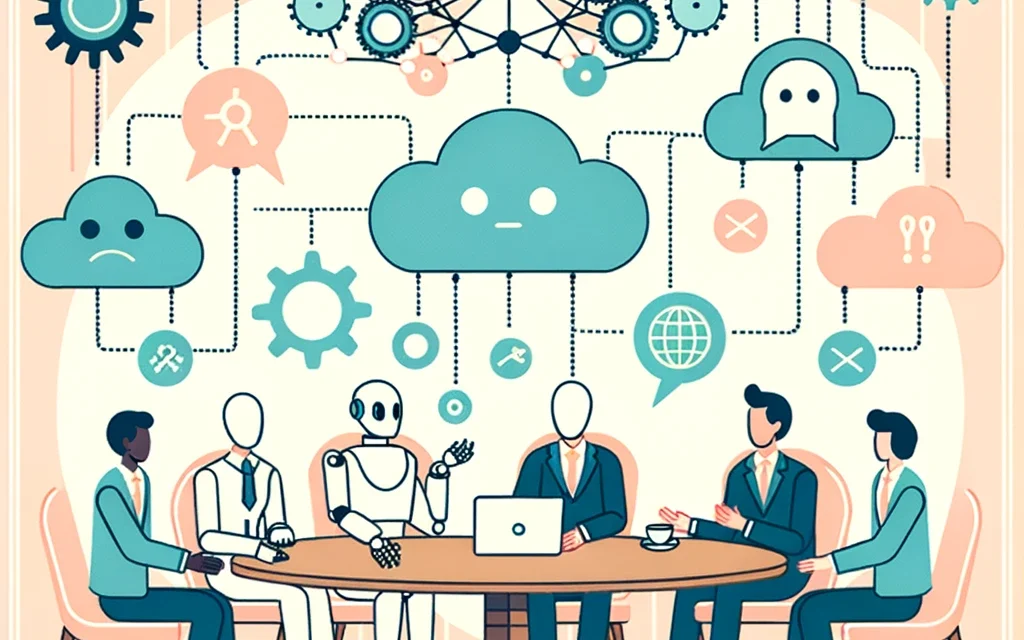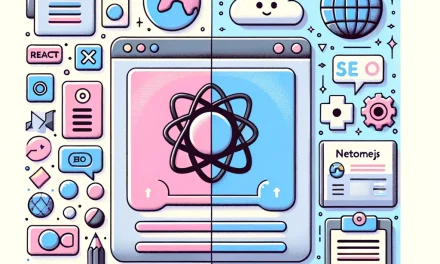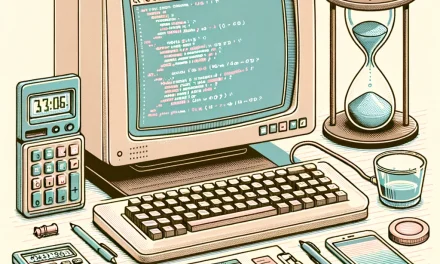In an era where artificial intelligence continually pushes the boundaries of what’s achievable, the Microsoft Autogen Framework emerges as a beacon of innovation. This cutting-edge framework is meticulously crafted to foster the development of Large Language Model (LLM) applications, unlocking a realm of possibilities through Multi-Agent Conversations. The essence of Microsoft Autogen lies in its ability to streamline complex workflows, where multiple agents—be they based on LLMs, tools, humans, or a blend thereof—engage in coherent dialogues to accomplish tasks.
The framework’s prowess doesn’t end here; it extends to offer customizable Autogen agents, adding a layer of flexibility and personalization that is crucial in today’s rapidly evolving technological landscape. The significance of understanding and leveraging the Microsoft Autogen Framework goes beyond mere technical advancement; it’s about ushering in a new age of collaborative AI where humans and machines harmonize to solve real-world challenges. As we delve deeper into the realms of Microsoft Autogen, we’ll unearth how this framework is not just a tool, but a gateway to mastering multi-agent dialogues and propelling LLM applications to new horizons.
Understanding the Microsoft Autogen Framework
The Microsoft Autogen Framework is a novel creation that sits at the crossroads of sophisticated machine learning and interactive communication. It is engineered to serve as a catalyst for developing Large Language Model (LLM) applications. The beauty of Autogen lies in its ability to foster multi-agent conversations, a feature that propels it into a league of its own. These conversations are more than just exchanges; they are the building blocks of complex workflows that mimic the collaborative efforts witnessed in a well-coordinated team.
Multi-agent conversations in Autogen are far from one-dimensional. They bring together a medley of agents—each with its unique capabilities—into a coherent dialogue. These agents could be based on LLMs, tools, or even humans, thus creating a fusion of expertise and insights. The open-source nature of Autogen is a testament to its collaborative ethos, providing a fertile ground for developers across the globe to contribute, refine, and expand upon the framework. This not only accelerates innovation but also nurtures a community of like-minded individuals who are bound by a common goal of advancing the field of artificial intelligence.
Autogen is more than just a framework; it’s a high-level abstraction of multi-agent conversations, encapsulating the intricacies of dialogues among diversified agents. It serves as a canvas where developers can paint their Large Language Model (LLM) applications, each stroke refined by the collaborative essence of multi-agent dialogues. The Autogen framework doesn’t just stop at enabling these dialogues but goes a step further by providing a customizable facet to these agents. This customization extends a personal touch to the otherwise automated dialogues, paving the way for more meaningful and goal-oriented conversations.
The Microsoft Autogen Framework is a harbinger of a new era where machine learning transcends code and algorithms to venture into a domain of intelligent conversations and collaborations. By delving into the Autogen Framework, developers are not just adopting a technology; they are embracing a philosophy that champions interactive dialogues at the heart of complex workflows. Its potential is boundless, and its impact profound, as it sets the stage for next-generation LLM applications that are characterized by multi-agent collaborations, teachability, and personalization as described on Microsoft’s official website.
Dive into Multi-Agent Conversations
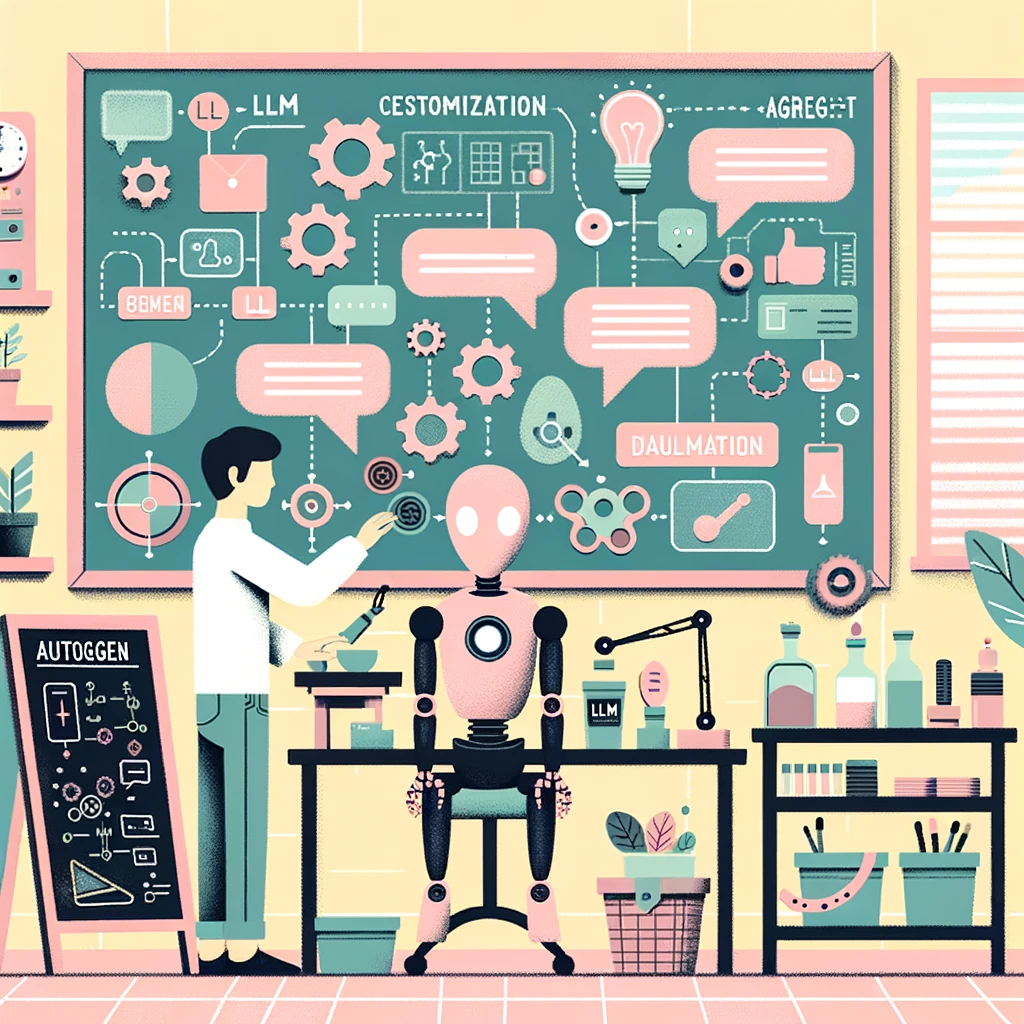
The digital realm is becoming increasingly interactive, demanding a seamless flow of communication to orchestrate complex workflows. This is where the concept of multi-agent conversations steps in, a core feature empowered by the Microsoft Autogen Framework. Multi-agent conversations are essentially dialogues among a diverse set of agents, which could be AI models, tools, or even humans, working in synergy to solve problems or complete tasks. The Microsoft Autogen Framework acts as the linchpin that facilitates these intricate dialogues, ensuring a coherent and collaborative interaction among the agents involved.
Explanation of Multi-Agent Conversations
Multi-agent conversations are not just about the exchange of messages but about meaningful interactions that drive towards a common goal. Each agent in the dialogue has its unique capabilities and roles, contributing to a collective effort to solve complex tasks. These conversations can be visualized as a harmonious exchange where each agent adds value, making the overall workflow more efficient and effective.
How Microsoft Autogen Facilitates Multi-Agent Dialogues
Microsoft Autogen Framework is engineered to be a high-level abstraction that enables multi-agent conversations. It abstracts and implements conversable agents designed to solve tasks through inter-agent conversations. Specifically, the agents in Autogen are conversable, meaning they can send and receive messages from other agents to initiate or continue a conversation. They are also customizable, allowing integration of Large Language Models (LLMs), humans, tools, or a combination of them.
For instance, an AssistantAgent can act as an AI assistant, using LLMs to write Python code based on a received message, while a UserProxyAgent acts as a proxy for humans, soliciting human input or executing code based on the interaction. The framework’s design facilitates the creation of agents that can communicate with each other and perform actions to jointly finish a task, as outlined in the Autogen Documentation.
Real-world Examples of Multi-Agent Conversations Enabled by Autogen
Building a multi-agent conversation system in Autogen involves defining a set of agents with specialized capabilities and roles, and defining the interaction behaviour between agents. For instance, a basic two-agent conversation could involve an AssistantAgent receiving a task description from a UserProxyAgent, and then writing Python code to solve the task. The UserProxyAgent can then execute the code, use the result to prepare an automatically generated reply, or solicit human input if needed.
This interaction can proceed autonomously or with human intervention, based on the configuration. Autogen also supports diverse conversation patterns, including fully autonomous conversations or human-in-the-loop problem solving, as well as static and dynamic conversations where the flow can follow a pre-defined topology or change dynamically based on the actual flow of conversation.
The Microsoft Autogen Framework significantly simplifies the orchestration, automation, and optimization of complex LLM workflows, enabling the development of next-gen LLM applications based on multi-agent conversations with minimal effort. Its capable, customizable, and conversable agents are integral in bridging the gap between humans, tools, and AI models, paving the way for more intuitive and collaborative problem-solving paradigms.
Large Language Model (LLM) Applications and Microsoft Autogen
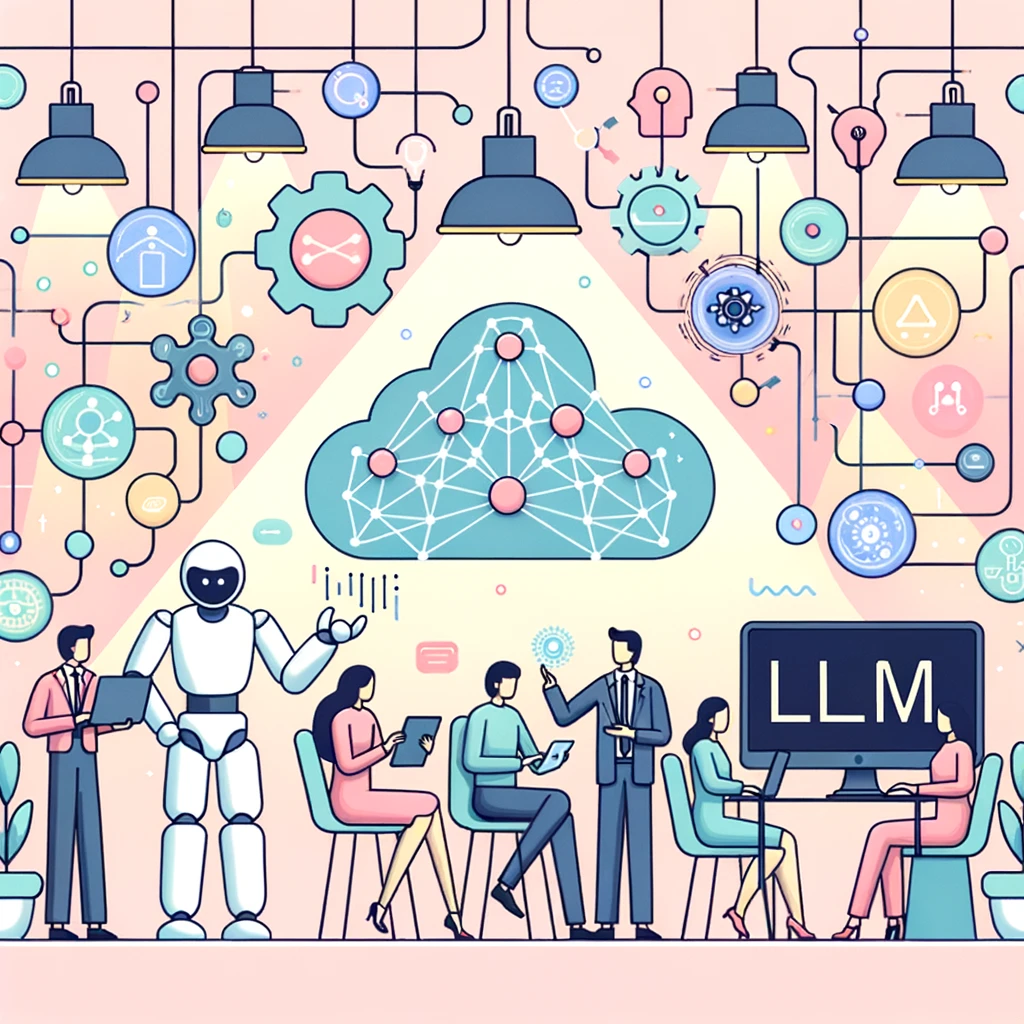
The arena of Large Language Model (LLM) applications is ever-expanding, making waves across a variety of domains. With the advent of models like GPT-4, the potential to harness the power of LLMs has soared, yet realizing this potential necessitates a robust, efficient, and intuitive framework. Enter the Microsoft Autogen Framework, a beacon of innovation designed to simplify the orchestration, optimization, and automation of LLM workflows. The Autogen framework presents a realm where the lines between human intelligence, machine learning models, and tools blur, paving the way for collaborative advancements in AI.
Building LLM Applications with Autogen
Autogen streamlines the process of developing complex LLM applications by encapsulating the essence of multi-agent conversations. It lays down a structured pathway where developers can define a set of agents with specialized capabilities and roles, alongside specifying the interaction behaviour between these agents. This structured approach not only renders the development process more intuitive but also modular, making the agents reusable and composable. For instance, building a system for code-based question answering becomes a matter of designing the agents and their interactions, a streamlined process that significantly reduces manual interactions and coding effort.
Seamless Integration of LLMs, Humans, and Tools
Autogen agents are crafted to leverage the strongest capabilities of advanced LLMs while addressing their limitations by integrating with humans and tools. This trio of LLMs, humans, and tools, orchestrated by Autogen, breeds a new generation of LLM applications that are not only sophisticated but also practical. For instance, configuring the usage and roles of LLMs in an agent, or achieving human intelligence and oversight through a proxy agent, becomes a breeze with Autogen. Moreover, native support for LLM-driven code or function execution amplifies the efficiency and effectiveness of the developed applications. As depicted in the Autogen Documentation, the integration of these elements facilitates the creation of more advanced and diverse applications.
Autogen’s customizable and conversable agents are not mere facilitators; they are game changers that open up a vast and complex design space for LLM workflows. They empower developers to venture into territories that were once considered challenging, if not impossible. With Autogen, the landscape of LLM applications is no longer a daunting terrain but an exploratory field ripe with opportunities for innovation and advancements in AI applications.
Customizable Autogen Agents: A New Wave of Flexibility
The Microsoft Autogen Framework is a remarkable innovation in the field of artificial intelligence, bringing forth a set of customizable and conversable agents that seamlessly allow human participation, bridging the gap between human intelligence and machine capabilities. These AutoGen agents are crafted to operate in a realm where they can leverage the strengths of advanced Large Language Models (LLMs) like GPT-4, while also being adept at addressing the limitations these models may have by integrating with humans and tools in a collaborative environment.
Bespoke Agent Customization
One of the striking features of AutoGen is its ability to offer customizable agents. These agents can be tailored to meet the specific needs of an application, including choosing the LLMs to use, the types of human input to allow, and the tools to employ. Developers have the flexibility to design agents that can operate in various modes, employing a combination of LLMs, human inputs, and tools to solve complex tasks. This level of customization fosters a conducive environment for developing sophisticated applications that could harness the full potential of LLMs while ensuring that the human element remains a crucial part of the equation, as explained on Geeky Gadgets.
Human-AI Collaboration
The seamless integration of human participation is a standout feature of Autogen. Humans can provide input and feedback to the agents as needed, creating a collaborative environment between humans and AI. This collaborative nature of Autogen is not just about augmenting the capabilities of AI, but also about creating a symbiotic relationship between humans and AI, wherein both can learn from and complement each other. This human-AI collaboration is envisioned to amplify the utility and effectiveness of expensive LLMs such as ChatGPT and GPT-4, by allowing for real-time feedback and inputs from humans to guide the AI in achieving more nuanced and contextually relevant outcomes.
Creating Complex Workflows
AutoGen’s support for diverse conversation patterns is a testament to its flexibility and adaptability. Developers can use AutoGen to build a wide range of conversation patterns concerning conversation autonomy, the number of agents, and agent conversation topology. This flexibility facilitates the creation of complex workflows capable of handling a variety of tasks. The ability to define intricate conversation patterns and workflows enables the development of next-generation LLM applications based on multi-agent conversations with minimal effort.
The Autogen Framework has undeniably ushered in a new wave of flexibility in developing LLM applications. Its customizable and conversable agents are at the forefront of this paradigm shift, opening up new vistas of possibilities in human-AI collaboration, complex workflow creation, and ultimately, in harnessing the full potential of LLMs in a real-world setting.
Harnessing a Collaborative Future
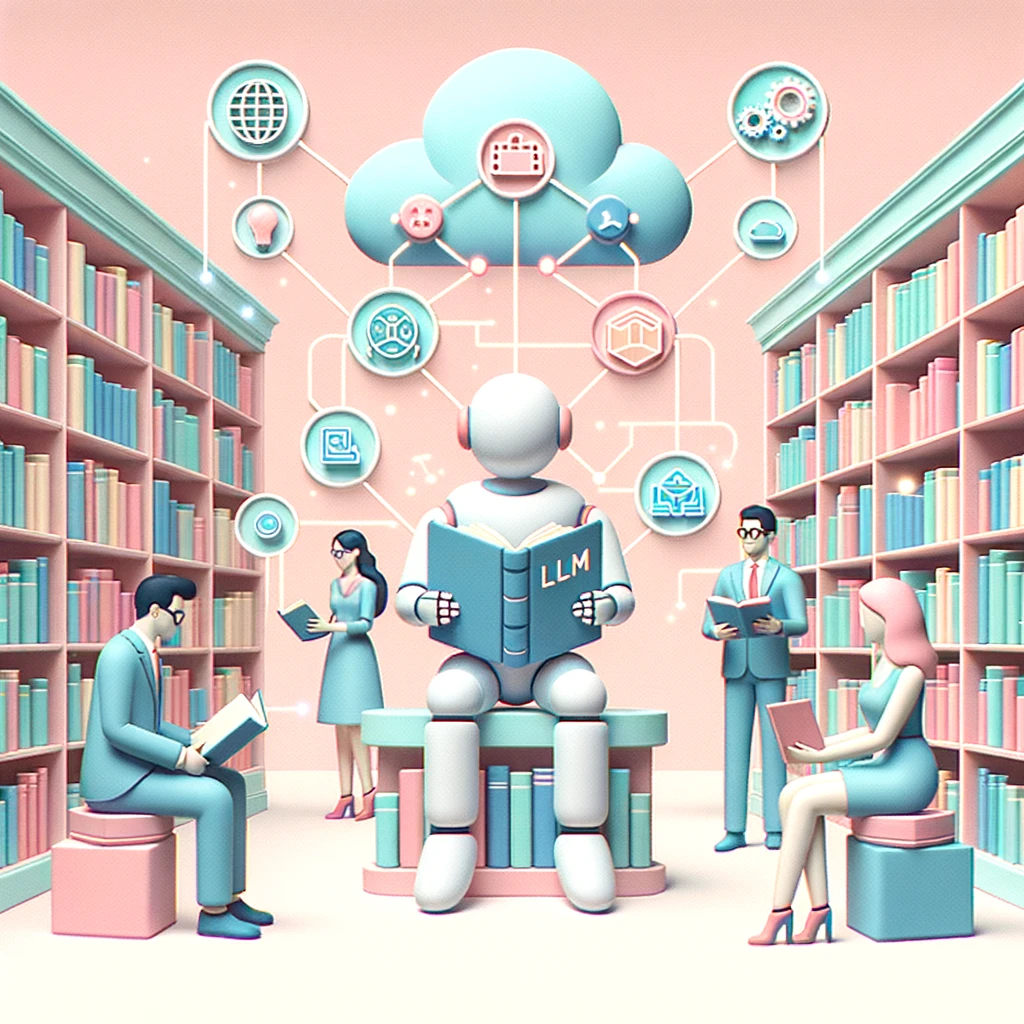
The expedition into the realms of advanced artificial intelligence is an ever-evolving journey. The Microsoft Autogen Framework stands as a beacon of innovation, ushering in a new era where multi-agent conversations become the linchpin for developing sophisticated Large Language Model (LLM) applications. Through the lens of Autogen, the fusion of human intelligence, machine learning models, and tools no longer seems like a distant horizon, but a tangible reality within grasp.
The customizable and conversable agents of Autogen are the torchbearers of this transformative venture, extending a canvas of endless possibilities for developers to paint their visions. The empowerment of creating intricate, collaborative workflows that intertwine the essence of human intellect with the prowess of machine learning models is a significant stride towards a future where the synergy between humans and AI transcends the conventional boundaries.
The Microsoft Autogen Framework doesn’t just stop at providing the tools for enhanced multi-agent dialogues; it opens the gateway to a collaborative future where the amalgamation of diverse agents, humans, and tools leads to the creation of applications that are not only robust and efficient but also intuitive and user-centric. As the curtain of limitations slowly lifts, the stage is set for a grand narrative of innovation and exploration in the AI landscape.
Embarking on this journey with Autogen is an invitation to be part of an exciting narrative that shapes the future of AI applications. It’s an opportunity to delve into a new paradigm of AI development, where the collaborative spirit of multi-agent conversations drives the narrative towards achieving not just smart, but also insightful and empathetic AI solutions. The Microsoft Autogen Framework is not merely a technological advancement; it’s a step closer to a collaborative future that holds the promise of elevating human-machine interactions to a plane of higher understanding and shared progress.

